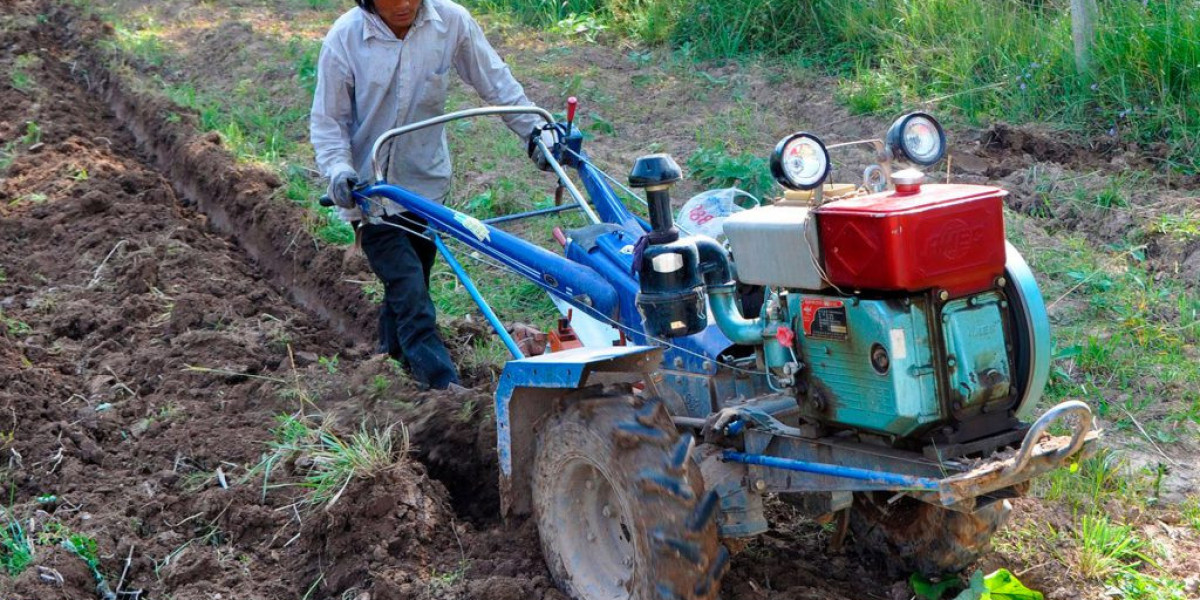Gardening is not only a hobby but also a therapeutic activity for many. Whether you are a seasoned gardener or just beginning your green thumb journey, one of the essential tools you need in your gardening arsenal is a garden tiller. In this blog post, we will explore the ins and outs of garden tillers, from understanding their types and benefits to tips on choosing the right one for your needs. Let's dig in!
What is a Garden Tiller?
A garden tiller is a machine designed to break up and aerate soil, making it easier to plant seeds and grow healthy plants. It uses rotating blades or tines to churn the soil, breaking up clumps and incorporating organic matter. Garden tillers come in various shapes and sizes, each suited for different gardening tasks.
Types of Garden Tillers
There are several types of garden tillers, each with its unique characteristics and advantages. The three main types are front-tine, rear-tine, and mini or cultivators.
Front-Tine Tillers
Front-tine tillers have tines located at the front of the machine, making them ideal for smaller gardens and lighter soil. They are typically easier to maneuver and are perfect for tilling between rows of plants. However, they may struggle with heavier, compacted soil.
Rear-Tine Tillers
Rear-tine tillers have tines located at the back of the machine, providing better traction and stability. They are more powerful and can handle larger gardens and tougher soil conditions. Rear-tine tillers are great for breaking new ground and preparing large garden plots but can be more challenging to maneuver in tight spaces.
Mini Tillers or Cultivators
Mini tillers or cultivators are smaller, lightweight machines designed for less strenuous tasks like weeding and aerating soil in smaller gardens or raised beds. They are easy to handle and store but may not be suitable for larger garden plots or heavy soil.
Benefits of Using a Garden Tiller
Using a garden tiller offers numerous benefits that can significantly improve your gardening experience and results. Here are some key advantages:
Improved Soil Structure
Garden tillers break up compacted soil, creating a loose and well-aerated structure. This allows plant roots to penetrate more easily and access essential nutrients and water, promoting healthier growth.
Enhanced Soil Fertility
Tillers help incorporate organic matter, such as compost and manure, into the soil. This process improves soil fertility, providing plants with the nutrients they need to thrive.
Weed Control
Regular tilling can help control weeds by disrupting their root systems and preventing them from establishing a foothold in your garden. This reduces competition for nutrients and water, allowing your plants to flourish.
How to Choose the Right Garden Tiller
Selecting the right garden tiller for your needs can be a daunting task, given the variety of options available. Here are some factors to consider when making your decision:
Garden Size and Soil Type
The size of your garden and the type of soil you have are crucial factors in determining the best tiller for your needs. For small gardens with light, sandy soil, a front-tine tiller or mini tiller may suffice. However, for larger gardens with heavy clay soil, a rear-tine tiller would be more suitable.
Power Source
Garden tillers can be powered by gas, electricity, or batteries. Gas-powered tillers are typically more powerful and better suited for larger gardens and tough soil. Electric tillers are quieter and more environmentally friendly but may struggle with heavy-duty tasks. Battery-powered tillers offer portability and convenience but may have limited runtime.
Tine Rotation
Tine rotation refers to the direction in which the tines spin. There are three types of tine rotation systems:
- Forward-rotating tines (FRT): Tines rotate in the same direction as the wheels, making them suitable for light tilling and cultivating.
- Counter-rotating tines (CRT): Tines rotate in the opposite direction of the wheels, providing better traction and digging power for heavy soil and breaking new ground.
- Dual-rotating tines (DRT): Tines can rotate both forward and backward, offering versatility for various tilling tasks.
Maintenance Tips for Your Garden Tiller
Proper maintenance is essential to keep your garden tiller running smoothly and efficiently. Here are some tips to help you maintain your tiller:
Regular Cleaning
After each use, clean your tiller thoroughly to remove dirt, debris, and plant material. This helps prevent rust and ensures the machine operates effectively.
Check and Replace Parts
Regularly inspect your tiller for worn or damaged parts, such as tines, belts, and spark plugs. Replace any faulty components promptly to maintain optimal performance.
Lubricate Moving Parts
Keep moving parts, such as the tine shaft and wheel axles, well-lubricated to reduce friction and wear. Use the appropriate lubricant recommended by the manufacturer.
Tips for Safe Tilling
Using a garden tiller can be physically demanding and potentially hazardous if not handled correctly. Here are some safety tips to keep in mind:
Wear Appropriate Gear
Always wear sturdy shoes, gloves, and eye protection when operating a tiller. Long sleeves and pants can also help protect your skin from debris and potential injuries.
Read the Manual
Familiarize yourself with the tiller's user manual and follow the manufacturer's instructions for safe operation and maintenance.
Be Aware of Your Surroundings
Before tilling, remove any obstacles, such as rocks, branches, and garden tools, from the area. Be cautious of underground utilities and irrigation systems to avoid damaging them.
Preparing Your Soil for Tilling
Proper soil preparation is essential for successful tilling. Follow these steps to ensure your soil is ready for tilling:
Test Your Soil
Conduct a soil test to determine its pH level and nutrient content. This information will help you make any necessary amendments to improve soil quality.
Remove Debris
Clear the area of any debris, such as rocks, roots, and weeds, to create a clean and safe workspace for tilling.
Add Soil Amendments
Incorporate organic matter, such as compost, manure, or peat moss, into the soil to improve its structure and fertility. Spread the amendments evenly across the area before tilling.
Tilling Techniques for Different Soil Types
Different soil types require specific tilling techniques to achieve the best results. Here are some tips for tilling various soil types:
Sandy Soil
Sandy soil is easy to till but may require frequent tilling to maintain its structure. Add plenty of organic matter to improve water retention and nutrient availability.
Clay Soil
Clay soil can be challenging to till due to its compact nature. Use a rear-tine tiller or counter-rotating tines for better traction and digging power. Incorporate organic matter to improve drainage and aeration.
Loamy Soil
Loamy soil is the ideal soil type for gardening, as it is easy to till and retains moisture and nutrients well. Use a front-tine tiller or mini tiller for light tilling and incorporate organic matter as needed.
When to Till Your Garden
Timing is crucial when it comes to tilling your garden. Here are some guidelines to help you determine the best time to till:
Spring Tilling
Spring is the most common time for tilling, as it prepares the soil for planting. Till the soil when it is dry enough to crumble easily but still retains some moisture.
Fall Tilling
Fall tilling can help break down organic matter and improve soil structure over the winter months. This practice is particularly beneficial for heavy clay soil, as it allows for better drainage and aeration.
Alternatives to Traditional Tilling
While traditional tilling is effective, there are alternative methods to consider for preparing your garden soil:
No-Till Gardening
No-till gardening involves minimal soil disturbance, preserving soil structure and promoting beneficial microorganisms. Instead of tilling, use mulch and cover crops to improve soil fertility and suppress weeds.
Double Digging
Double digging is a manual method of soil preparation that involves removing the top layer of soil, loosening the subsoil, and then replacing the top layer. This technique improves soil structure and aeration without the need for machinery.
Conclusion
A garden tiller is a valuable tool that can make your gardening tasks more manageable and enjoyable. By understanding the different types of tillers, their benefits, and how to choose the right one for your needs, you can transform your garden into a thriving, beautiful space. Remember to follow proper maintenance practices and safety guidelines to ensure your tiller remains in top condition. Happy gardening!



